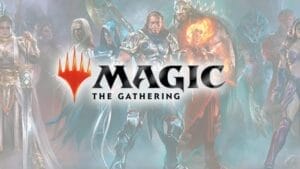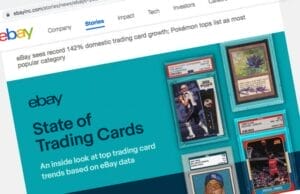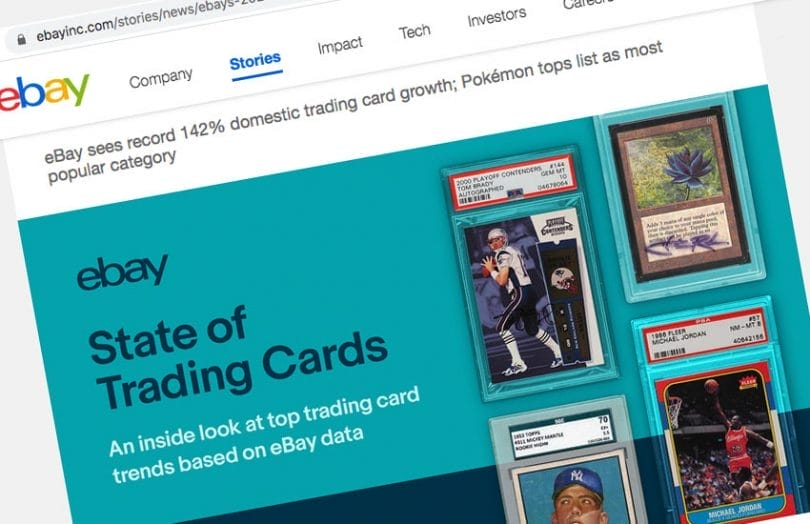
1. Introduction
Welcome to the fascinating world of card collecting! Whether you’re a seasoned collector or a beginner, there’s always something new to learn. This guide is designed to provide you with all the essential knowledge you need to navigate the card collecting market. We’ll cover the best practices to start buying and selling collectible cards, and how to stay safe in the process. So, let’s dive right in and start exploring!
In the world of collectible cards, knowledge is power. The more you understand about the market, the types of cards, and the factors that influence card value, the better your chances of success in buying and selling. Whether you’re doing this for fun or looking at it as an investment, a well-informed approach can make all the difference.
Collecting cards can be a rewarding hobby, a lucrative business, or both. It’s a world filled with the thrill of discovery, the satisfaction of a good deal, and the joy of owning a piece of history. But it also comes with challenges. The market can be complex and unpredictable, and there are risks involved. But don’t worry – we’re here to guide you every step of the way.
In the following sections, we’ll delve deeper into the different aspects of card collecting. We’ll provide you with practical tips and strategies, as well as important safety advice. By the end of this guide, you’ll be well-equipped to embark on your card collecting journey. So let’s get started!
Table of Contents
2. Understanding Collectible Cards
Collectible cards, those small pieces of cardboard that hold a universe of fascination, have a long and rich history. They originated in the 19th century, tucked into cigarette packs as a marketing gimmick. Fast forward to today, and they’ve evolved into a multi-billion dollar industry, with cards spanning a multitude of themes and interests.
2.1 The Different Types of Collectible Cards
Collectible cards come in a variety of forms. Let’s delve deeper into the different types that you might come across on your collecting journey.
2.1.1 Sports Cards
Sports cards, which first made their appearance around the year 1886, are some of the most popular types of collectible cards. They typically feature an image of a player, their name, the team they represent along with player statistics. Over the years, sports cards have seen a surge in market value and have grown in popularity as a potential asset for investment.
2.1.2 Non-Sports Cards
Non-sports cards cover a broad range of themes, from wildlife and landmarks to beloved movies and TV series. These cards offer collectors a chance to curate a personalized narrative that’s unique to them. They’re about more than just acquiring artifacts; they’re about building a collection that tells a story.
2.1.3 Trading Card Games (TCGs) and Collectible Card Games (CCGs)
Trading Card Games (TCGs) and Collectible Card Games (CCGs) add a dynamic angle to card collection, integrating the thrill of a game. These cards feature fantastic artwork and serve as integral elements of the gameplay. As collectibles, they can command high prices, especially if they’re rare or have significant utility within the game.
2.1.4 Game-Used Memorabilia Cards and Autograph Cards
Game-Used Memorabilia Cards provide collectors with a piece of the action, offering fragments of game-used items from their favorite sports. Similarly, Autograph Cards carry genuine autographs of personalities, adding a personal touch to the collection.
2.2 What Makes a Card Valuable?
The value of a card can be influenced by a variety of factors, including rarity, condition, demand, and the popularity of the player or subject. Rarity and condition are especially important. A rare card in excellent condition can fetch a high price on the market. However, the card’s value is ultimately determined by what collectors are willing to pay for it.
Now that we’ve covered the basics of collectible cards and their different types, let’s move on to where you can buy these cards and how to go about it.
3. Where to Buy Collectible Cards
In the age of digital marketplaces, there is a myriad of places where collectors can buy cards. The right place for you will depend on your needs, preferences, and the specific cards you’re looking for.
3.1 Online Platforms
Online platforms like eBay, Amazon, and specialized card trading websites offer a vast selection of cards from all over the world. You can find rare cards, complete sets, or specific cards from your favorite players or series. These platforms also provide a convenient way to compare prices and check the condition of the cards before buying.
3.2 Card Shows
Card shows are events where collectors and dealers gather to buy, sell, and trade cards. They’re a great place to find rare and valuable cards, meet other collectors, and learn more about the card collecting community. They can be a treasure trove of valuable finds, but it’s essential to do your research before attending to ensure you’re getting a fair deal.
3.3 Local Shops
Local card shops can be a great resource for collectors. They often have a knowledgeable staff who can provide advice and information, and you can inspect the cards in person before buying. However, the selection may be limited compared to online platforms.
3.4 Online Communities and Forums
Online communities and forums like Sports Card Forum or the Net54baseball forum provide platforms for collectors to discuss their interests, ask for advice, and share tips and resources. These communities often have sections for buying, selling, and trading cards.
Each of these buying options has its pros and cons, and what works best for you will depend on your specific needs and circumstances. The most important thing is to do your research, know what you’re looking for, and be patient. The world of card collecting is vast and varied, and the perfect card is out there waiting for you!
In the world of collectible cards, it is crucial for collectors to familiarize themselves with the terminology used in the hobby. Understanding these terms not only allows collectors to communicate effectively with fellow enthusiasts but also helps them make informed decisions when buying, selling, or trading cards. To aid collectors in this endeavor, Special One Cards has created a comprehensive blog post that serves as a trading cards dictionary, providing definitions and explanations for various terms and acronyms commonly used in the world of collectible cards
4. Tips for Buying Collectible Cards
Now that you know where to buy collectible cards, let’s delve into some best practices and tips that can guide you in this exciting journey. Remember, the aim is not just to buy a card but to make a wise purchase that adds value to your collection.
4.1 Do Your Research
Before you make any purchase, it’s crucial to do your homework. This means researching not only the card you’re interested in but also the broader market conditions and trends. Understand the history of the card, its rarity, and its typical market value. What era is it from? Which player or series does it belong to? How many such cards are known to exist?
You should also familiarize yourself with the price ranges for similar cards. Online resources, card price guides, and forums can be a treasure trove of information. These tools can help you identify whether a card is overpriced or a steal. Engaging with other collectors can also be enlightening and can help you make informed decisions.
4.2 Check the Condition of the Card
The condition of a card plays a significant role in its value. A card in mint condition is typically more valuable than a card with visible signs of wear and tear. When examining a card, look for any signs of damage, including creases, stains, or faded colors. Pay close attention to the corners, edges, and surface of the card as these areas are particularly prone to wear.
If you’re buying online, don’t hesitate to ask the seller for high-resolution images from different angles. This will help you assess the card’s condition accurately. If the seller is unwilling to provide detailed images, consider it a red flag.
4.3 Understand the Market
Understanding the market is vital when it comes to buying collectible cards. Market values can fluctuate based on various factors, including the popularity of the player or series, and trends in the collectible card market.
Keep an eye on market trends and news. Are certain types of cards becoming more popular? Are there upcoming events or anniversaries that could boost the value of certain cards? Staying updated on these factors can help you identify potential bargains and avoid overpaying.
4.4 Research the Seller
When buying from an online seller, it’s crucial to research their reputation. Check their ratings and reviews from previous buyers. Look for any red flags, such as negative feedback or a history of selling fake or overpriced cards.
Communication is also key. A reliable seller will be willing to answer your questions, provide additional pictures, and offer a fair return policy. If a seller is evasive or unwilling to provide clear answers, it might be best to look elsewhere.
4.5 Be Patient
Patience is a virtue in the world of card collecting. It can be tempting to rush into a purchase, especially when you come across a card that seems rare or valuable. However, it’s important to take your time, do your research, and ensure that you’re making a sound investment.
5. The Art of Storytelling in Card Collecting
Now that we’ve covered the practical aspects of card collecting, let’s delve into the more emotional side of it. Collecting cards is much more than just an accumulation of items; it’s about the stories these cards tell and the memories they preserve. Each card in your collection can tell a unique story, making your collection not just a set of cards, but a treasure trove of narratives.
5.1 The Stories Behind the Cards
Every card has a story to tell. It could be the story of a rookie player who went on to become a legend. It could be the story of a memorable game or a historical event. Or it might be the story of the era it represents, capturing the cultural and social nuances of that time.
Take, for example, a vintage Babe Ruth card. This card tells the story of one of the greatest baseball players of all time, a man who changed the game forever. But it also tells the story of the Roaring Twenties, a time of prosperity and cultural change in America.
5.2 The Stories You Create
But the storytelling in card collecting isn’t just about the stories the cards tell. It’s also about the stories you create as a collector. Every card you add to your collection is a chapter in your collecting journey. The thrill of hunting down a rare card, the excitement of finally acquiring it, the people you meet along the way – these experiences and memories become part of your story as a collector.
5.3 Sharing Your Stories
Sharing your stories is one of the joys of card collecting. Whether it’s through social media, online forums, or at card shows, sharing your experiences and hearing the stories of other collectors can be immensely rewarding. It’s a way to connect with others who share your passion and to learn from their experiences.
5.4 Preserving Your Stories
Finally, remember that your collection is not just a set of cards; it’s a repository of stories. Treating your cards with care and preserving them well is about more than protecting your investment. It’s about preserving these stories for future generations. It’s about passing on the passion and the joy of collecting to others.
5.5 Special One Cards Puts Storytelling at the Heart of Every Card
Special One Cards places a strong emphasis on the art of storytelling through their unique card designs. We understand the power and impact that a well-crafted story can have on its audience, and we also utilize this understanding to create a captivating experience for our users. Each card on our website is carefully curated to tell a story, with intricate details and vivid imagery that transport the reader to a different world. Whether it’s a card depicting a fantastical adventure or a heartfelt moment, Special One Cards ensures that every card has a narrative that resonates with its audience.
6. Tips for Selling Collectible Cards
Selling collectible cards can be a rewarding endeavor, both financially and in terms of sharing your passion with others. Here are some tips to help you maximize your success when selling collectible cards:
6.1 Research and Determine Card Value
Before listing your cards for sale, it’s important to research and determine their value. Factors such as the manufacturer, copyright date, player’s reputation, condition, and rarity can all influence the value of a card. Consider the following:
- Identify the manufacturer and copyright date: Look for this information on the card itself or on the back. If it’s not listed, you can use online resources or search engines to gather more information about the card.
- Assess the condition of the cards: Evaluate any imperfections such as worn corners, creases, scuffs, or writing, as these can affect the value. Vintage cards may have printing defects that are factored into their value. Store valuable cards in plastic sleeves or sheets to protect them from damage.
6.2 Choose the Right Platform
Selecting the right platform to sell your collectible cards is crucial. Consider the following options:
- Online marketplaces: Platforms like eBay, TCGplayer, and COMC (Check Out My Cards) provide a wide audience and convenient selling options. Be sure to research the fees, listing requirements, and seller protection policies of each platform before making a decision.
- Sports card communities and forums: Joining online communities and forums dedicated to card collecting can provide valuable insights, advice, and potential buyers. Engaging with these communities can also help you stay updated on trends and events.
6.3 Provide Accurate and Detailed Descriptions
When creating listings for your collectible cards, it’s important to provide accurate and detailed descriptions. This helps potential buyers understand the condition, features, and value of the cards. Consider including the following information:
- Card details: Manufacturer, copyright date, player, and any notable characteristics or variations.
- Condition: Describe any imperfections or notable aspects of the card’s condition.
- Authenticity: If applicable, mention any certification or authentication processes the card has undergone .
6.4 Pricing Your Cards
Determining the right price for your collectible cards is essential. Consider the following factors:
- Market research: Research recent sales of similar cards to gauge their market value.
- Condition and rarity: Take into account the condition and rarity of your cards when setting the price.
- Competitive pricing: Consider pricing your cards competitively to attract potential buyers.
6.5 Packaging and Shipping
Proper packaging and shipping are crucial to ensure your cards reach buyers in the best condition. Follow these guidelines:
- Use protective packaging: Place the cards in a sleeve or top loader, and use bubble mailers or rigid envelopes to prevent damage during transit.
- Secure shipping: Consider using tracked shipping options and insurance for higher-value cards to provide peace of mind for both you and the buyer.
Remember to stay informed about the latest trends and news in the card collecting market to make informed decisions and identify opportunities to maximize your sales. By following these tips, you can increase your chances of successfully selling your collectible cards and sharing your passion with fellow collectors.
7. Staying Safe When Buying and Selling Collectible Cards
When it comes to buying and selling collectible cards, it’s important to prioritize safety and take precautions to protect yourself and your transactions. Here are some tips to help you stay safe:
7.1 Meet in a Safe Location
When meeting with buyers or sellers in person, it’s crucial to choose a safe location. Consider the following:
- Public places: Opt for public locations such as coffee shops, game stores, or card shows. These places provide a neutral and secure environment for conducting transactions.
- Bring a friend: If possible, bring a friend or family member with you when meeting someone for a transaction. Having a companion can provide an extra layer of security and peace of mind.
7.2 Verify the Authenticity of Cards
To avoid scams or counterfeit cards, it’s important to verify the authenticity of the cards you are buying or selling. Consider the following:
- Research and educate yourself: Familiarize yourself with the characteristics, markings, and details of genuine cards. This knowledge will help you identify potential fakes or altered cards.
- Seek professional opinions: If you are unsure about the authenticity of a card, consider seeking the opinion of a reputable card grading service or an experienced collector. They can provide insights and help you make informed decisions.
7.3 Use Secure Payment Methods
When conducting transactions, it’s important to use secure payment methods to protect both the buyer and the seller. Consider the following:
- Online payment platforms: Platforms like PayPal, Venmo, or Stripe offer secure payment options for online transactions. These platforms provide buyer and seller protection, reducing the risk of fraudulent activities.
- Cash on delivery: If you are meeting in person, consider using cash on delivery (COD) as a payment method. This allows both parties to inspect the cards before completing the transaction.
7.4 Research and Verify the Seller/Buyer
Before entering into a transaction, it’s important to research and verify the credibility of the seller or buyer. Consider the following:
- Online reputation: If you are buying or selling online, check the seller or buyer’s reputation on the platform you are using. Look for positive reviews, ratings, or feedback from previous transactions.
- Communication and transparency: Engage in open and transparent communication with the other party. Ask questions, request additional information or photos, and ensure that both parties are on the same page before finalizing the transaction.
7.5 Insure Valuable Cards
If you are dealing with high-value cards, consider insuring them to protect against loss or damage. Contact your insurance provider to inquire about coverage options for collectible items. Having insurance can provide peace of mind and financial protection in case of unforeseen events.
By following these safety tips, you can minimize risks and ensure a secure buying and selling collectible cards experience. Remember to trust your instincts and prioritize your safety throughout the process. Happy collecting and selling!
8. Conclusion
In conclusion, buying and selling collectible cards can be an exciting and rewarding endeavor. However, it’s important to approach the process with caution and prioritize safety. By following the tips outlined in this blog post, you can protect yourself and ensure a secure transaction experience.
Remember to choose a safe location when meeting with buyers or sellers in person and consider bringing a friend along for added security. Take the time to verify the authenticity of the cards you are dealing with to avoid scams or counterfeit items. Use secure payment methods, such as online platforms or cash on delivery, to protect both parties involved in the transaction.
Research and verify the credibility of the seller or buyer before entering into a transaction. Look for online reputation and engage in open and transparent communication to ensure a smooth process. If dealing with high-value cards, consider insuring them to protect against loss or damage.
Throughout the blog post, we have emphasized the importance of storytelling in engaging and captivating your audience. Incorporating storytelling techniques into your writing can make your blog post more interesting and memorable. Craft compelling narratives, create character development through dialogue, and build emotional connections with your readers. Remember to measure the success of your storytelling efforts through metrics and audience feedback.
By combining safety precautions with compelling storytelling, you can create an engaging, interesting, and informative blog post about buying and selling collectible cards. Happy writing and happy collecting!
External Sources:
1. Complete Guide to Selling Your Old Trading Cards | Zephyr Epic
2. Best Practices for Protecting and Displaying Collectible Cards
3. Tips for Making Thousands Selling Sports Cards, From a Collector








